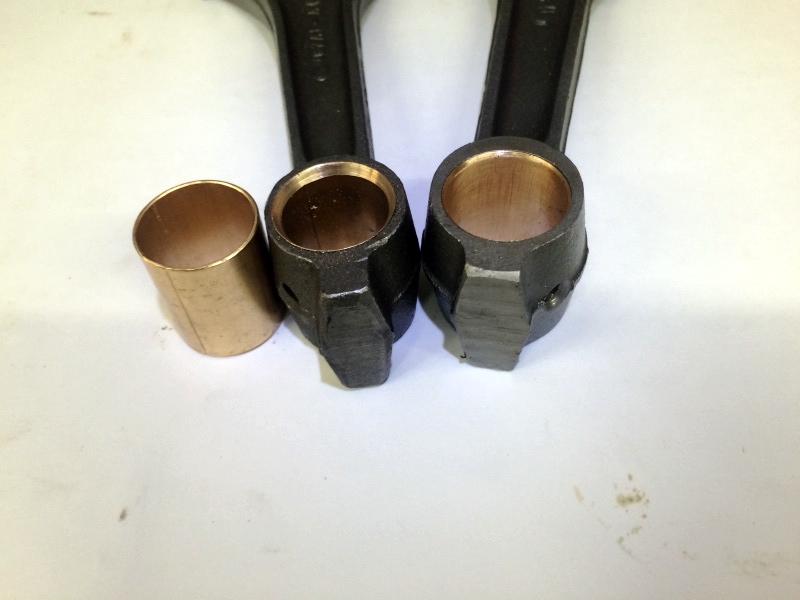
ADDRESSING CONNECTING ROD SMALL END ISSUES
When dealing with piston pin ends of connecting rods, we have found a countersink to be a very useful tool. Attempting to guide a piston pin into a bushing with only .0001-.0005” clearance can be a frustrating task, occasionally resulting in damage to the edge of the piston pin or the bushing. To make pin installation easier in the finished bushing, prior to machining, we will use a countersink in a drill press to give the bushing a heavy taper. This helps to easily guide the pin into place, and this same tip can be used as it applies to installing piston pins on press-fit rods as well. – We also use this method when replacing bushings on rods, where the rod itself has little to no taper, as pressing in a bushing against an non-tapered steel wall can cause the bushing to crush, distort, or shear off material, leaving it loose in the bore. Another way it’s helpful is to dress up the edge of a bushing or rod, should you have a core that was slightly dinged up at some point in the process, and prevents the pin from passing through. – In any case, it is VERY important to note that when even lightly using a countersink, the pressure will leave a slight raised ridge on the leading edge of the surface you’re cutting, which can be easily removed. One can just use a mandrel, but we prefer to wrap a 240 grit emery cloth over a mandrel that’s extended out to where the edge of the rod will barely start over it, thereby polishing only the very leading edge (.002-.003”, or just a few rotations of the mandrel is generally enough), and leaving the rest of the bore untouched. Of course, using low pressure and letting the tool do the work will minimize any ridge created. In trying several countersinks we found that 3 and 4 flutes seem to work the best. It’s not uncommon to have “chatter” at first, but simply working off the rough edges on a couple of junk rod will usually smooth it out.
Miles Rogers
BP Rods
Magnolia, TX
July, 2016